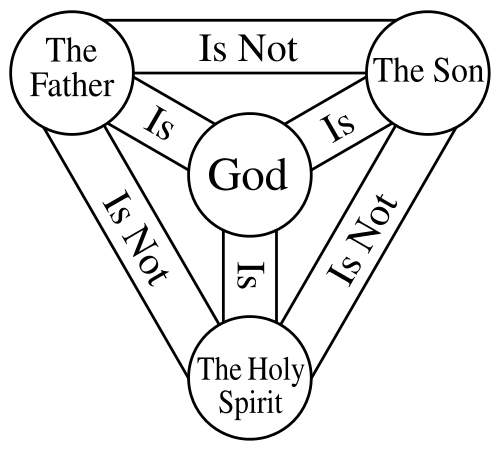One of the most fundamental beliefs of Christians everywhere is the belief in the Holy Trinity, the confession that God is one in substance and three in person. This is a belief that God has revealed to us, most explicitly through the incarnation of Jesus and the sending of the Holy Spirit at Pentecost.
This is a mystery of our faith and no human being can truly understand it fully. Then there is the challenge of taking such a complex concept like the Trinity and making it easier for children to grasp. For most parents and educators the task is daunting.
Thankfully, there are many different ways to present the Trinity to children that may even shed light on the belief for adults. It is a tricky business, one where the parent or educator needs to walk a fine line. For example there are many popular explanations (such as the shamrock — or our modern version, the fidget spinner) that present the Trinity as “parts” of a whole and end up creating an image of the Trinity that is not entirely accurate. To be sure, God has no parts. In the end whatever explanation is used, it needs to be faithful to the essential belief in the Trinity while not creating misconceptions in the believer.
In this article, we will examine three traditional methods of teaching the Trinity that have stayed with the Church over the centuries. These are older methods that stay true to the Trinity and are generally accepted by theologians.
Before we can look at the three methods, it is important to remember that ultimately our efforts will fall short. The Catechism explains how it is a mystery, one that requires more than just reason to believe in.
The Trinity is a mystery of faith in the strict sense, one of the “mysteries that are hidden in God, which can never be known unless they are revealed by God.” To be sure, God has left traces of his Trinitarian being in his work of creation and in his Revelation throughout the Old Testament. But his inmost Being as Holy Trinity is a mystery that is inaccessible to reason alone or even to Israel’s faith before the Incarnation of God’s Son and the sending of the Holy Spirit. (CCC 237)
Going forward, we take this important task of education in a spirit of faith, realizing our limits, but doing what we can to help others understand the truth and beauty of God.
1. Trinitarian Diagram

There is an ancient Trinitarian diagram, often called the “Shield of the Trinity,” that helps explain who God is and the relation of the three divine persons. The diagram helps show visually how each of the three persons is God, but remain distinct from the others. This image can be helpful for children who are beginning to grasp the reality of the Trinity.
2. Trinity as the Speaker, the Word, and the Breath
Another way to explain the Trinity is to use a traditional image used by the Church. The Catechism explains how, “When the Father sends his Word, he always sends his Breath” (CCC 689). From scripture we hear of Jesus spoken of as the “Word” of God and the Holy Spirit is often referenced as the “Breath” (“he breathed on them, and said to them, ‘Receive the Holy Spirit'” – John 20:22).
This analogy makes God the Father the “Speaker.” The “Word” that he utters is God the Son. And the “Breath” he uses to speak his “Word” is God the Holy Spirit. Of course, God has neither a mouth nor breath. The image is drawn from our experience of speaking, where spoken words cannot exist without breath: there can be no word without a breath and no breath without a speaker. Additionally, a word requires a speaker and a speaker needs breath to give voice to a word. When we apply this experience to God analogically, we can say that in God the Speaker, the Word, and the Breath are all united yet distinct.
The Trinity’s distinct persons but inseparable unity is stressed in this analogy and it can be a helpful illustration for children able to reason.
3. Rublev’s Trinity Icon
There are numerous depictions of the Trinity in art, but one of the most symbolic that Christians around the world repeatedly use is that of Russian iconographer Andrei Rublev. It is one that various Orthodox churches have kept through the centuries and continue to rely on.
The symbolism of the image is complex (initially inspired by Abraham’s encounter in Genesis 18) and is meant to summarize the Church’s belief in the Holy Trinity. For children it is helpful to have a visual image and while the symbolism is not immediately evident, when it is explained the Trinity starts to make much more sense.
As an example, the three angels in the icon are identical in appearance, representing the single substance of the three Persons. However, each angel is wearing a different garment, representing how each Person remains distinct from the other. The fact that Rublev depicts the Trinity using angels is also a reminder of the nature of God, who is pure spirit. The angels are shown from left to right in the order that we profess our faith in the Creed: Father, Son, and Holy Spirit.
There are many other symbols present in the icon and a more complete explanation can be found in the article, “The Russian Icon that Reveals the Mystery of the Trinity.”
—
If you would like to know why there are some problems using popular modern analogies to teach the Trinity, check out this funny and insightful video below.

